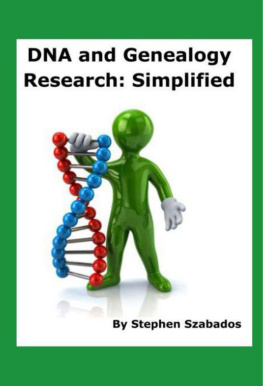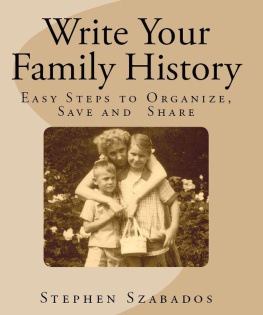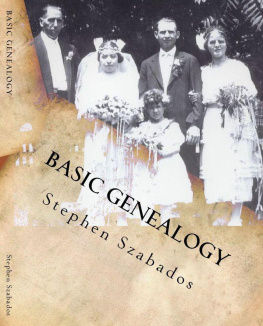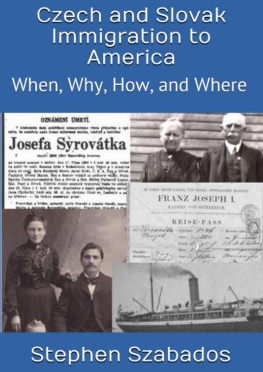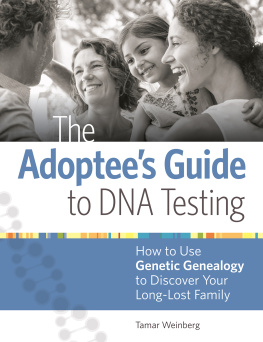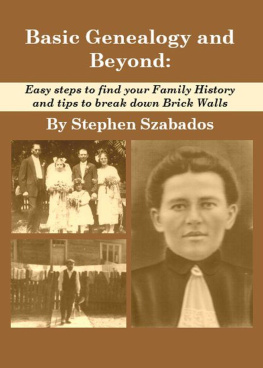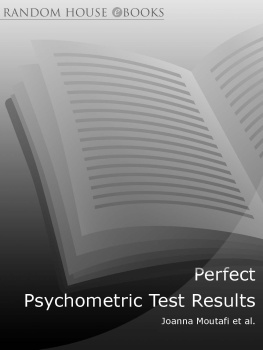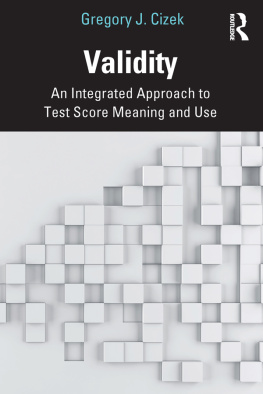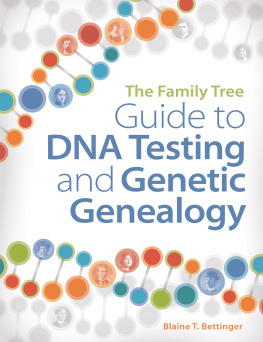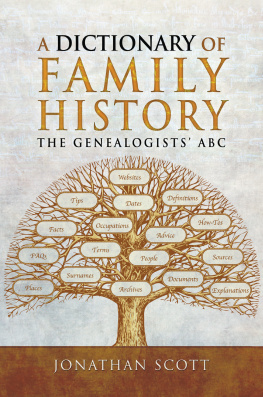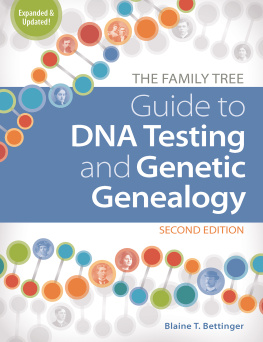Stephen Szabados - DNA and Genealogy Research: Simplified
Here you can read online Stephen Szabados - DNA and Genealogy Research: Simplified full text of the book (entire story) in english for free. Download pdf and epub, get meaning, cover and reviews about this ebook. year: 2020, publisher: Stephen Szabados, genre: Home and family. Description of the work, (preface) as well as reviews are available. Best literature library LitArk.com created for fans of good reading and offers a wide selection of genres:
Romance novel
Science fiction
Adventure
Detective
Science
History
Home and family
Prose
Art
Politics
Computer
Non-fiction
Religion
Business
Children
Humor
Choose a favorite category and find really read worthwhile books. Enjoy immersion in the world of imagination, feel the emotions of the characters or learn something new for yourself, make an fascinating discovery.
- Book:DNA and Genealogy Research: Simplified
- Author:
- Publisher:Stephen Szabados
- Genre:
- Year:2020
- Rating:5 / 5
- Favourites:Add to favourites
- Your mark:
DNA and Genealogy Research: Simplified: summary, description and annotation
We offer to read an annotation, description, summary or preface (depends on what the author of the book "DNA and Genealogy Research: Simplified" wrote himself). If you haven't found the necessary information about the book — write in the comments, we will try to find it.
Here is my new book that covers my simplified view of using DNA in genealogical research. I tried to say away from using scientific terms and keep it simple. I know my methods work because I solved a mystery of a non-marital mystery with no paper trail or oral history. Its a very short read (84 pages) but should help most of DNA test-takers understand their test results. It is available as a print book and eBook.
The DNA testing companies have flooded the market with many promotional ads that promise to unlock secrets in our family trees. The result of the promotions has generated large sales of DNA test kits and large numbers of genealogists who are looking for methods to understand their DNA test results. This book will give the reader some hints on how to use DNA results to expand their research and family history.
The critical value of this book is my explanation of how to overcome the scientific nature of the results by looking at your results using traditional genealogical skills. My explanation includes practical examples of how to use the tools, and my goal is to simplify how you analyze your results in terms that all of us as genealogists can understand. I present a case-study, where I discuss using these tools to find a biological father whose existence was a total surprise to his son.
Genetics is not an easy science to understand, and many test-takers are confused by their results. Use the tools discussed in this book to begin searching for understanding of your DNA results. Focus on the goals you had when you ordered your test kit. Follow the clues to open up new information for your family history. DNA testing is only one tool in your genealogy tool kit, but it is a powerful tool. Use it wisely. Learn to use DNA and traditional genealogical techniques in tandem, and you will be able to harness the full value of genetic testing.
Stephen Szabados: author's other books
Who wrote DNA and Genealogy Research: Simplified? Find out the surname, the name of the author of the book and a list of all author's works by series.

